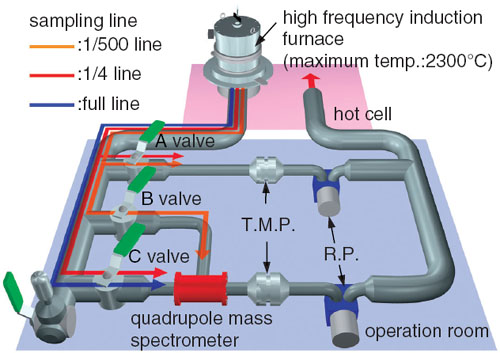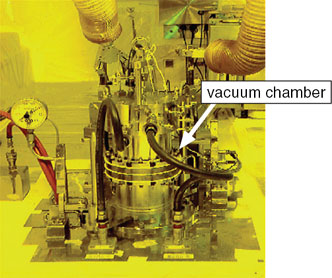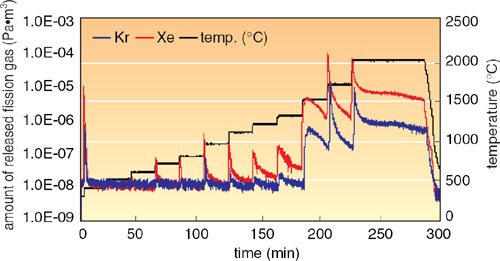Burnup extension of Light Water Reactor (LWR) fuel has been promoted to reduce the quantity of spent fuels, to reduce carbon dioxide emissions and fuel cycle costs, and to improve the efficient use of uranium resources. The amount of fission gases, such as krypton (Kr) and xenon (Xe), in irradiated pellets increases with burnup extension. It is necessary to contain most fission gas in the pellet. However, fission gas might be released from the rim structure region at the pellet periphery. Furthermore, fission gas release increases under transient condition of a nuclear reactor. Fission gas release, which is the cause of the increase in internal pressure of a fuel rod, adversely affects the safety of the fuel rod. To investigate the behavior of fission gas release in pellets, the Out Gas Analyzer (OGA) was developed (Fig. 3-4).
The OGA consists of a high frequency induction furnace and a quadrupole mass spectrometer. The furnace can heat to nearly the melting point of pellets in the hot cell (Fig. 3-5). The amount of released fission gas is measured online by the quadrupole mass spectrometer under a good vacuum condition. A sample crucible and heated parts of the furnace are made of tungsten due to its heat resistance and chemical stability. In addition, three sampling lines that are able to adjust the flow of released fission gas, are provided to ensure a good vacuum condition for the quadrupole mass spectrometer. The OGA can analyze the amount of released fission gas from one pellet (ca. 5 g) for an estimate of the total amount, to a small sample (< 100 mg) for an estimate of the fission gas release behavior in the micro region of a pellet. The fission gas release curves from an irradiated pellet were obtained by online measurements (Fig. 3-6) to evaluate the temperature dependence of the fission gas release. This technique provides useful data to evaluate the fission gas release behavior under normal operation and accident conditions. The data contribute to improve the reliability of high burnup LWR fuel.
|


